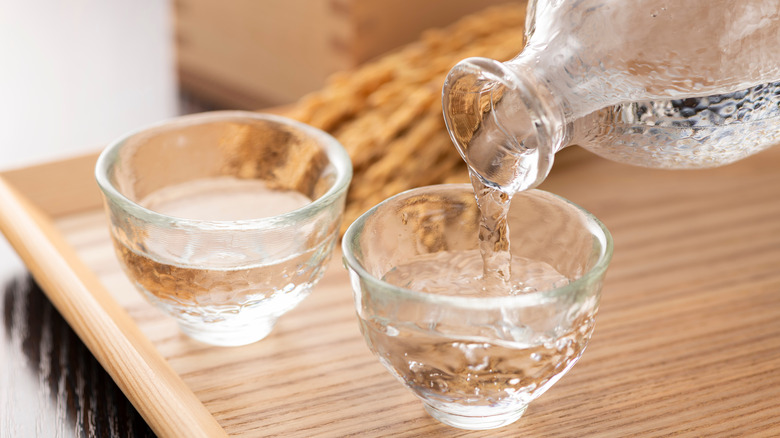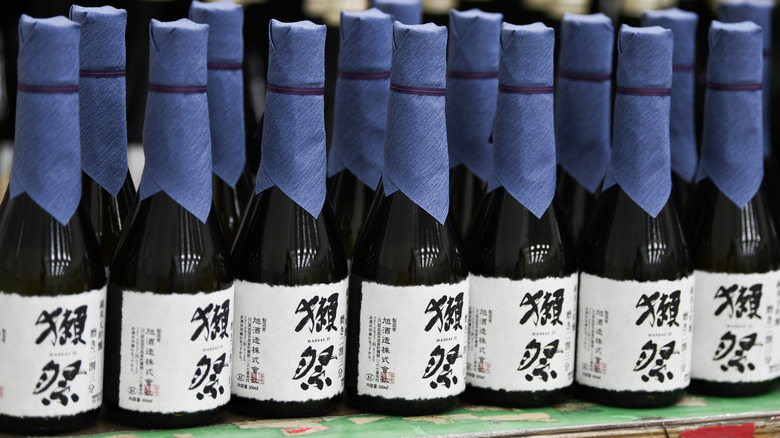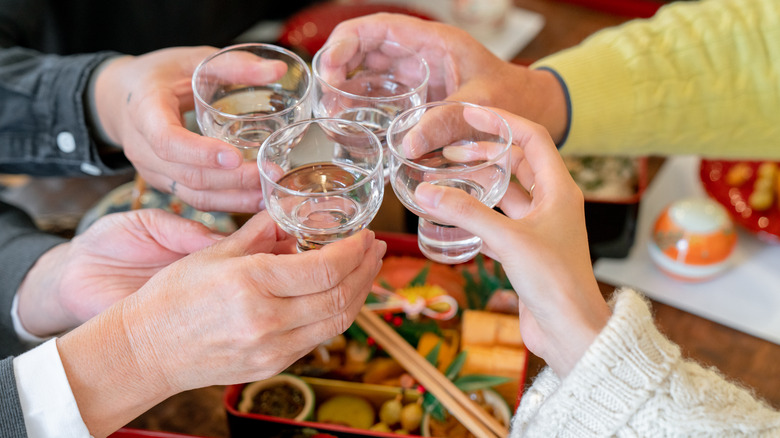How Long Sake Will Maintain Its Flavor After Opening
Sake is a Japanese alcohol made from fermented rice that comes in many varieties worth exploring. You might come across simple sakes served at your local sushi bar, or "raw," unpasteurized sake with more singular flavors. However, regardless of the type of rice or brewing method used to make it, sake has a rather limited shelf life after you open the bottle.
Proper storage techniques are extremely important to keeping sake fresh. As a general rule, larger bottles retain their flavors more effectively than smaller ones. The smaller the amount of sake, the more of its volume is exposed to air, which causes oxidation. In most cases, sake will retain its flavors for one to two weeks after opening. It will technically be safe to drink for an even longer period, but the flavors and aromas will diminish each day, lessening its quality until it's nowhere near as good as it was when you opened it.
Meanwhile, if the bottles are unopened, sake should be good for up to one year. However, this is a guideline for pasteurized sake, and different styles with little to no pasteurization can have different lifespans. To understand what factors impact the life of your bottle, it's important to learn what makes sake go bad, and how to store this unique alcohol to keep it fresh.
Why does sake lose its quality?
Sake is often described as a "rice wine," but it's not made in the same way as wine. Sake starts with rice instead of grapes or fruit, is slightly stronger than wine in terms of alcohol content, and also lasts longer after opening. However, like wine, sake continues to "age" after opening and is prone to decay upon contact with oxygen, so maintaining a tight seal on sake bottles is extremely important. Sake bottles do not have corks, but twist-on caps, which aid in airtight sealing.
Two other factors, light and temperature, also impact how quickly sake will deteriorate. Sake is vulnerable to UV light damage, so it's often packaged in dark brown or green bottles. Even so, avoid exposing the bottles to sunlight, or you could damage the drink's color, flavor, and aroma. Sunlight can speed up oxidization and bacterial decay in both opened and unopened sake. This is doubly true for unpasteurized or partially pasteurized sakes, which are not as stable and should be stored in the fridge as soon as you take them home. Unopened "raw" sake should be consumed within six to nine months.
High temperatures can also cause sake to deteriorate faster. It's recommended that bottles be stored in cool, dark conditions, and never at temperatures above 59 degrees Fahrenheit. And once you open a bottle, putting it in the fridge is a must.
How to keep your sake fresh for longer
Sake with sushi is a classic pairing, but you have far more control (and options) if you buy and drink your own sake at home, and not just at restaurants. This way, you know your sake is being stored properly. As said before, refrigeration is the best method to preserve the flavor and freshness of open bottles. Not all styles of sake require refrigeration before opening, but once the cap is off, it's recommended to store bottles in a consistently cold place in your fridge, with no temperature fluctuations. Make sure your fridge is at 41 degrees Fahrenheit or colder, as well.
We've also said that larger bottles of sake stay fresh for longer, but only if they're relatively full. The degree of oxidation is dependent on the ratio of liquid to air — more air in the bottle means more oxidation. For this reason, some connoisseurs transfer their sake from larger to smaller bottles once they've poured out a significant portion, to help extend the lifespan of the leftover alcohol. And if you're really serious about sake, vaccuum sealers are another way to help preserve its delicate flavors and aromas.



